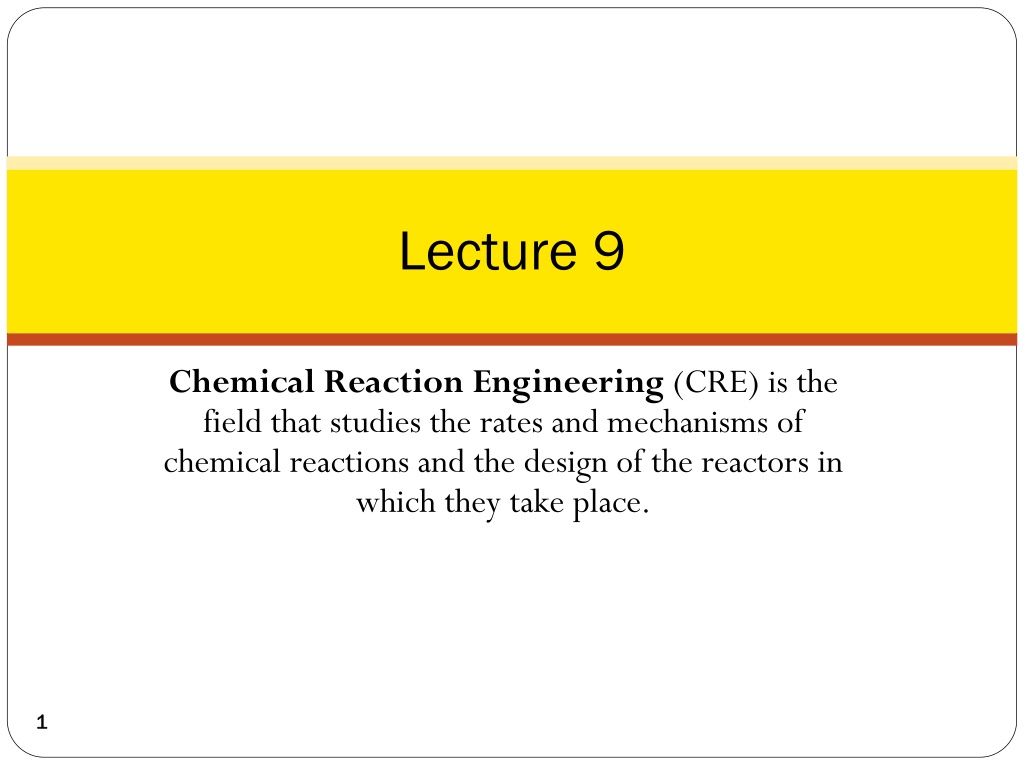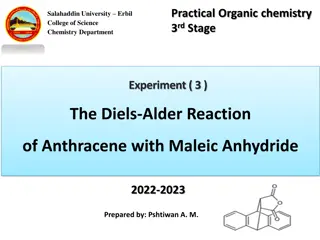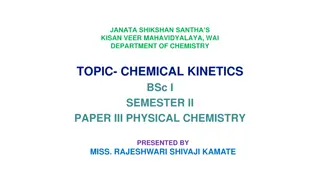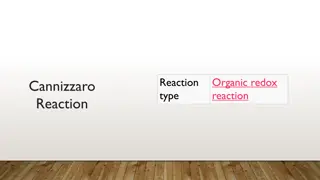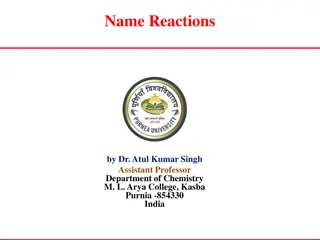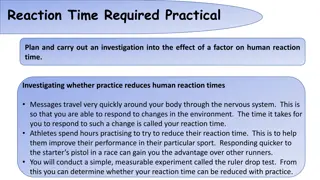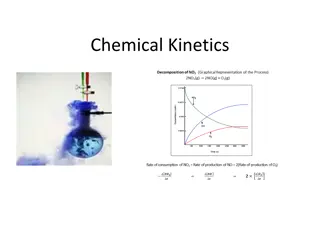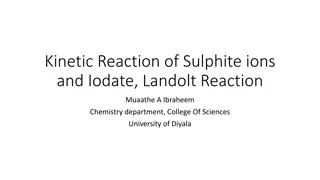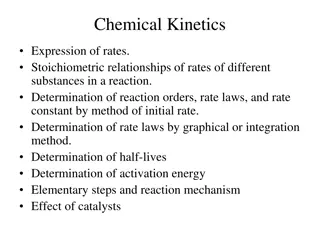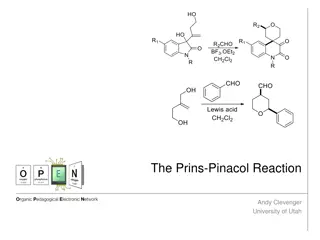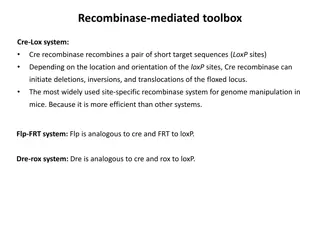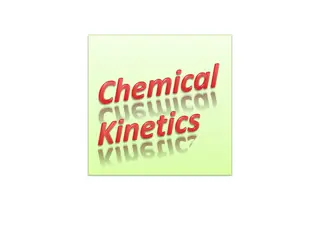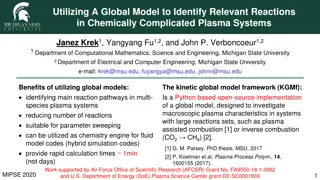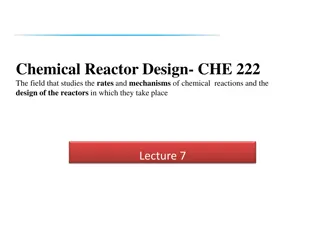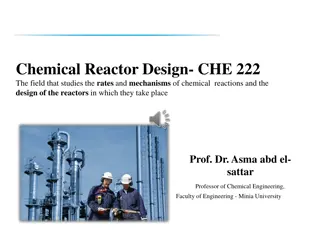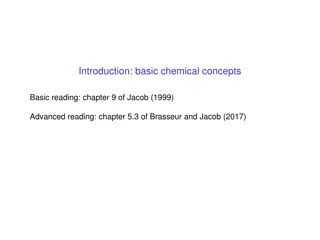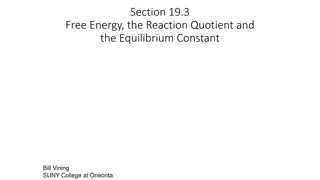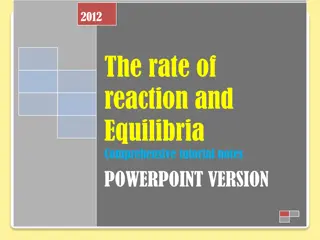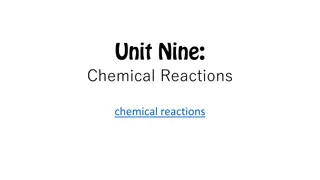Introduction to Chemical Reaction Engineering (CRE)
Chemical Reaction Engineering (CRE) focuses on studying the rates and mechanisms of chemical reactions, as well as designing reactors for these reactions. The field involves understanding balances in terms of molar flow rates, mole balances, rate laws, stoichiometry, and membrane reactors. Membrane reactors are used to achieve higher conversions by leveraging Le Chatelier's principle, where reaction products are removed to drive the reaction forward. Specific examples include dehydrogenation reactions in thermodynamically limited scenarios.
Download Presentation

Please find below an Image/Link to download the presentation.
The content on the website is provided AS IS for your information and personal use only. It may not be sold, licensed, or shared on other websites without obtaining consent from the author.If you encounter any issues during the download, it is possible that the publisher has removed the file from their server.
You are allowed to download the files provided on this website for personal or commercial use, subject to the condition that they are used lawfully. All files are the property of their respective owners.
The content on the website is provided AS IS for your information and personal use only. It may not be sold, licensed, or shared on other websites without obtaining consent from the author.
E N D
Presentation Transcript
Lecture 9 Chemical Reaction Engineering (CRE) is the field that studies the rates and mechanisms of chemical reactions and the design of the reactors in which they take place. 1 1
Lecture 9 Lecture 9 Thursday Balances in terms of molar flow rates Block 1: Mole Balances Balance Equation on Every Species Block 2: Rate Laws Relative Rates Transport Laws Block 3: Stoichiometry Block 4: Combine Thursday Membrane Reactors: Used for thermodynamically limited reactions 2 2
Review Lecture 1 Reactor Reactor Mole Balances Mole Balances Summary Summary The GMBE applied to the four major reactor types (and the general reaction A B) Reactor Differential Algebraic Integral NA N dN A 0 A N dN = A t Batch A= r V A r V dt A t V =FA0 FA CSTR rA FA F dF A dFA dV A PFR = A V = rA dr A F 0 V FA F dF A PBR dFA dW= r A A = A W A r F 3 3 0 W
Membrane Reactors Membrane reactors can be used to achieve conversions greater than the original equilibrium value. These higher conversions are the result of Le Chatelier s principle; you can remove the reaction products and drive the reaction to the right. To accomplish this, a membrane that is permeable to that reaction product, but impermeable to all other species, is placed around the reacting mixture. 5
Membrane Reactors Dehydrogenation Reaction: C3H8 H2+ C3H6 A B + C Thermodynamically Limited: exothermic Xe Xe XEB T 6
Membrane Reactors Cross section of IMRCF Membrane Reactors Cross section of CRM Schematic of IMRCF for mole balance 7
Membrane Reactors sweep B W = bV = solids weight b= (1- ) C= bulk solids density C = density of solids FA0 A,B,C B ??=?????? ?????? ?????? ????? ???? ?? ?????? ?????? ?????? H2 H2 CBS CB A,C stay behind since they are too big 8
Membrane Reactors Mole Balance on Species A: Species A: In out + generation = 0 + = 0 F F r V A A A + V V V dF = A r A dV 9
Membrane Reactors Mole Balance on Species B: Species B: In out out membrane + generation = 0 + = 0 F F R V r V B B B B + V V V dF = ( ) B r R B B dV moles of through B sides = R B volume of reactor 10
Membrane Reactors molar flow rate through membrane surface area of membrane mol m '( C = = ) W k C C B B BS 2 s DL 2 membrane surface area 4 D m = = = a 2 3 reactor vo lume m D L 4 ' = = R W a k a C C B B C B BS ' = k k a C C mol 3 = R k C C B C B BS m s Neglected most of the time 11
Membrane Reactors Mole Balances: ( ) 1 dF = A r A dV dF ( ) 2 = B r R B B dV dF ( ) 3 = C r C dV Rate Law: ( ) 4 C C = B K C r k C A A C 12
Membrane Reactors r r r = = Relative Rates: C A B 1 1 1 ( ) 5 ( ) 6 ( ) 7 = = , r r r r Net Rates: Transport Law: A B A C R = k C B C B F C = Stoichiometry: A C (isothermal, isobaric) 0 A T F F T ( ) 8 C = B C 0 B T F F T ( ) 9 ( ) 10 C = C C 0 C T F T F = + + F F F T A B C Parameters: CTO = 0.2, FA0= 5, k = 4, KC = 0.0004, kC= 8 13
Membrane Reactors Example: The following reaction is to be carried out isothermally in a membrane reactor with no pressure drop. The membrane is permeable to product C, but impermeable to all other species. Inert Sweep Gas H2 (C) C6H12 C6H6+3H2 A B+3C C6H12 (A) C6H6 (B) Inert Sweep Gas For membrane reactors, we cannot use conversion. We have to work in terms of the molar flow rates FA, FB, FC. 14
Membrane Reactors C6H12 C6H6+3H2 A B+3C Mole Balances dF = A r A dW Inert Sweep Gas H2 (C) dF = B r C6H12 (A) B dW C6H6 (B) dF = C r k C Inert Sweep Gas C C C dW 15
Membrane Reactors 3 C C Rate Law: = B K C r k C A A A C Relative Rates: r r r = = C A B 1 1 3 Net Rates: = r r B A = 3 r r C A 16 16
Membrane Reactors P Stoichiometry: Isothermal, no Pressure Drop CT= 0 0 RT 0 F = A C C 0 A T F F T = B C C 0 B T F T F = C C C 0 C T F T = + + F F F F T A B C 17 17
Membrane Reactors Combine: - Use Polymath mol mol CT= 0= 2 . 0 10 Parameters: FA 0 3 dm dm s dm 3 3 = = 10 5 . 0 kA kC kg cat s kg cat s 2 mol KC= 200 6 dm 18 18
Membrane Reactors C6H12 (A) C6H6 (B) Ci H2 (C) W 19 19
End of Lecture 9 20 20
